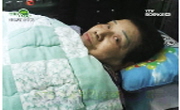The purpose of this study is to examine the characteristics of various outdoor spaces based on the layout principles of Seowon. The research methodology includes a review of previous theories on traditional Korean Seowon architecture, followed by an a...
http://chineseinput.net/에서 pinyin(병음)방식으로 중국어를 변환할 수 있습니다.
변환된 중국어를 복사하여 사용하시면 됩니다.
- 中文 을 입력하시려면 zhongwen을 입력하시고 space를누르시면됩니다.
- 北京 을 입력하시려면 beijing을 입력하시고 space를 누르시면 됩니다.
https://www.riss.kr/link?id=A109499296
- 저자
- 발행기관
- 학술지명
- 권호사항
-
발행연도
2024
-
작성언어
Korean
-
주제어
전통 서원건축 ; 서원 배치 ; 배치 원리 ; 야외공간 ; 마당 ; 활성화 ; 접근성 ; Traditional Seowon Architecture ; Seowon Layout ; Layout Principles ; Outdoor Space ; Courtyard ; Activation ; Accessibility
-
KDC
540
-
자료형태
학술저널
-
수록면
210-213(4쪽)
- 제공처
-
0
상세조회 -
0
다운로드
부가정보
다국어 초록 (Multilingual Abstract)
The purpose of this study is to examine the characteristics of various outdoor spaces based on the layout principles of Seowon. The research methodology includes a review of previous theories on traditional Korean Seowon architecture, followed by an analysis of the characteristics and activation levels of outdoor spaces in four representative Seowon that are inscribed on the UNESCO World Heritage list. The results are as follows: First, flexible spatial composition is achieved by grouping areas according to building functions. Second, central activity spaces should guide movement and visual focus. Third, outdoor spaces must organically expand outward or concentrate inward depending on the layout.
동일학술지(권/호) 다른 논문
-
법과 자료에 기반한 문화·자연유산의 방재환경 연구 - 경상남도 지정유산을 중심으로 -
- 대한건축학회
- 고명환(Ko, Myong-Hwan)
- 2024
-
코로나 전후 업무공간 연구의 키워드 분석 - 신체적, 정신적 웰니스의 잠재적 적용 가능성 모색
- 대한건축학회
- 주한나(Ju, Hannah)
- 2024
-
- 대한건축학회
- 김서우(Kim, Seou)
- 2024
-
360도 VR 실험을 통한 다세대주택 진입공간의 범죄 불안감 연구
- 대한건축학회
- 서민진(Seo, Min-Jin)
- 2024




 DBpia
DBpia






